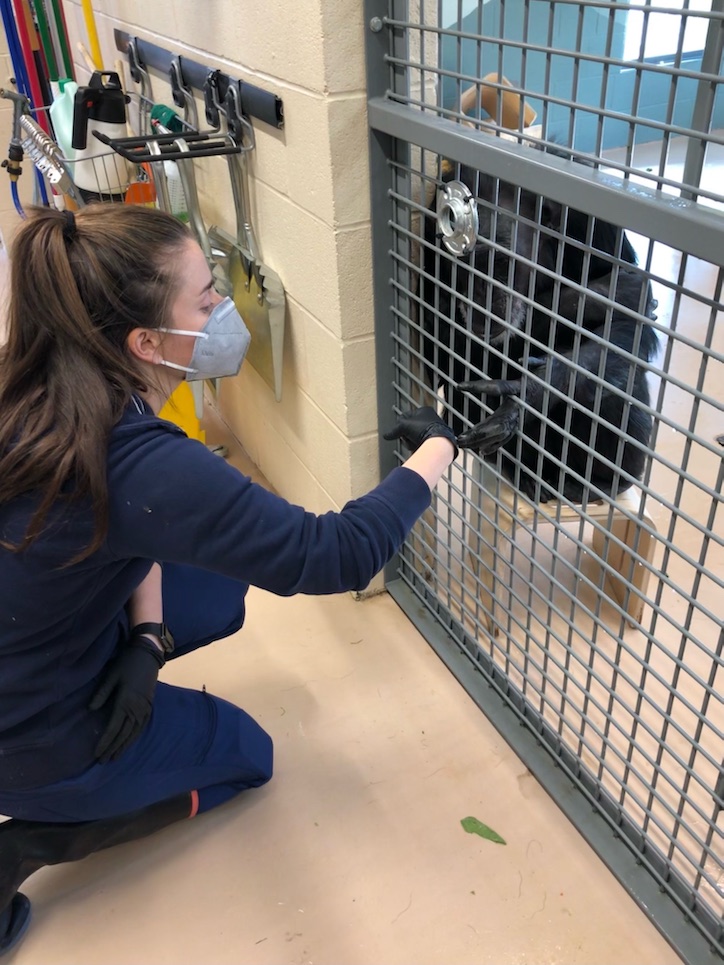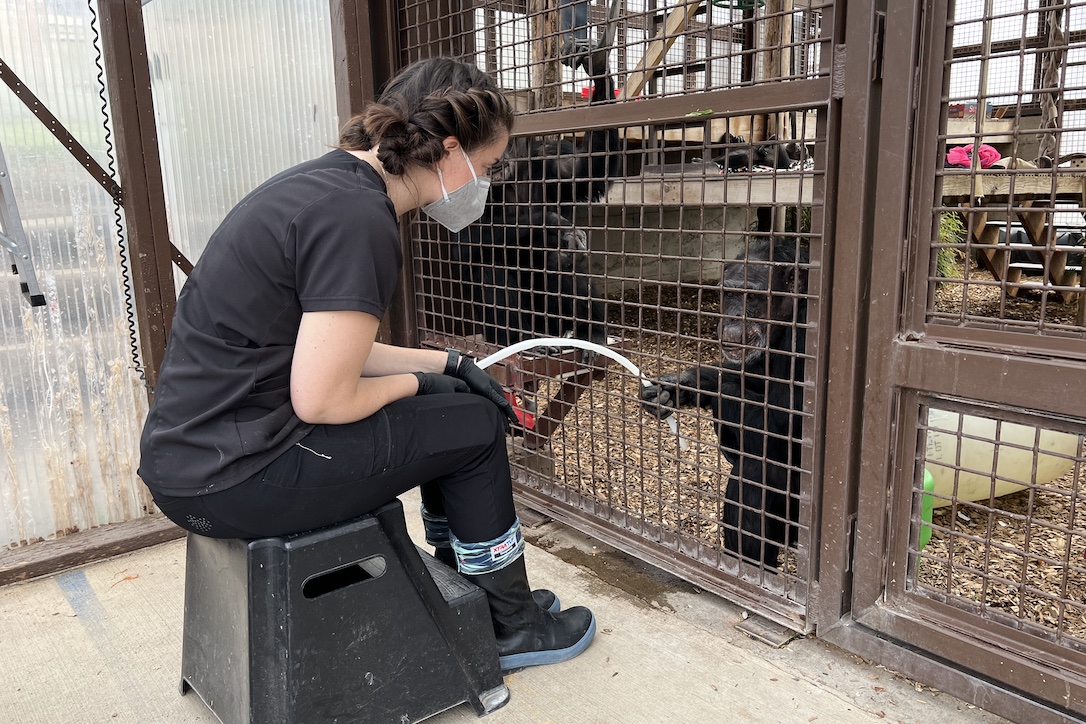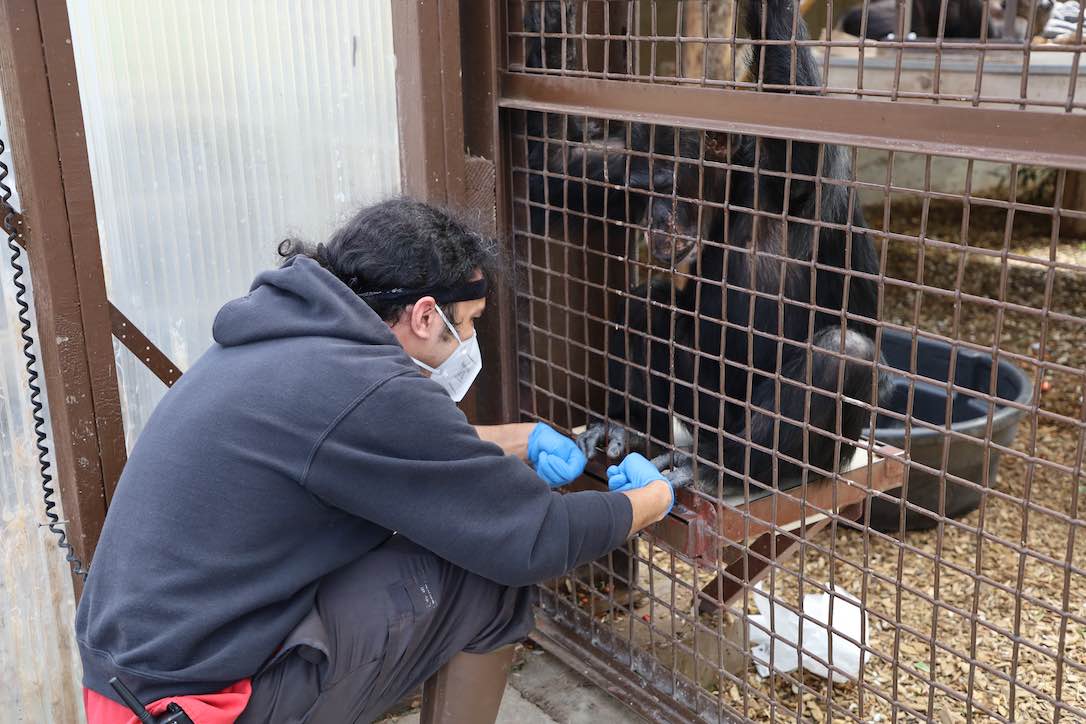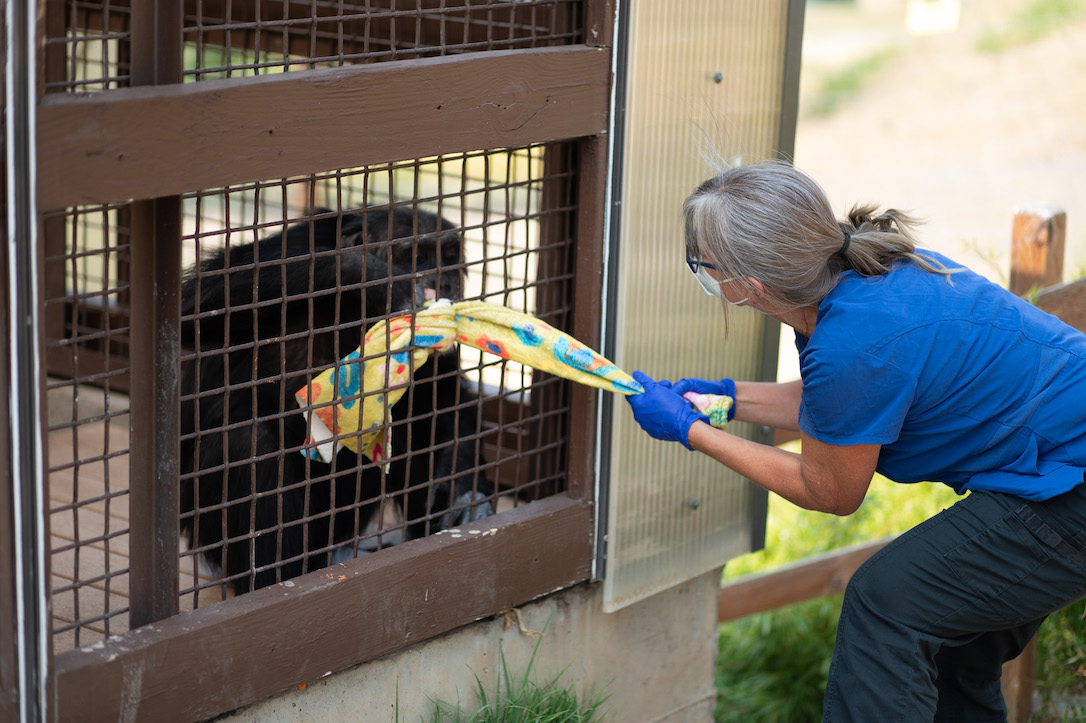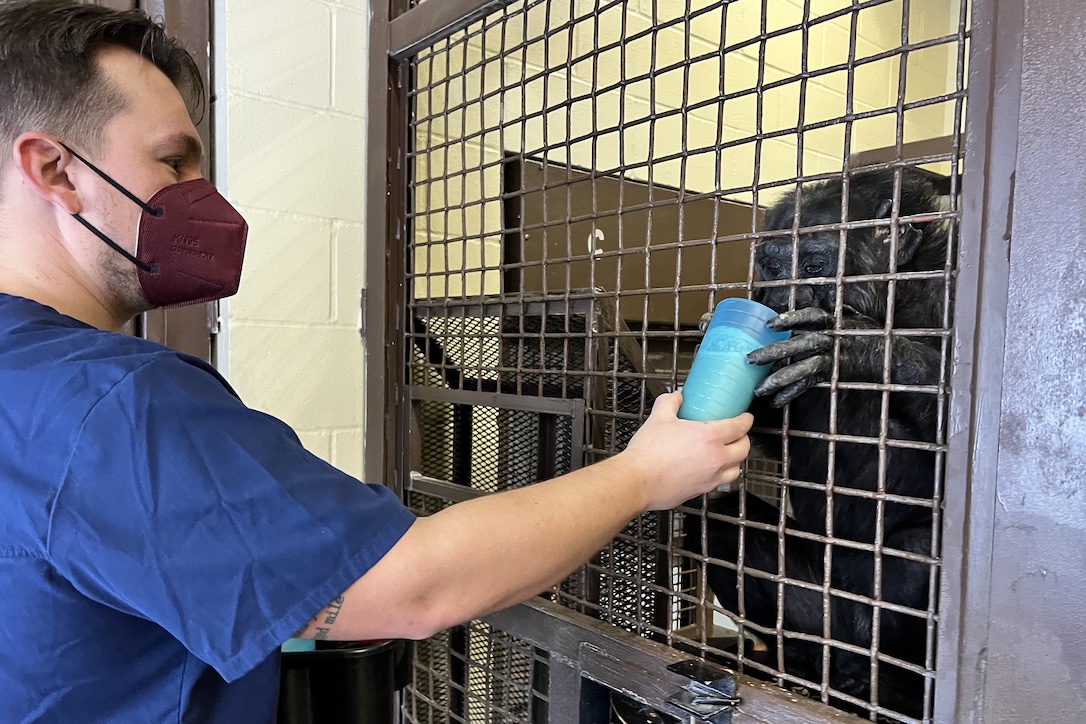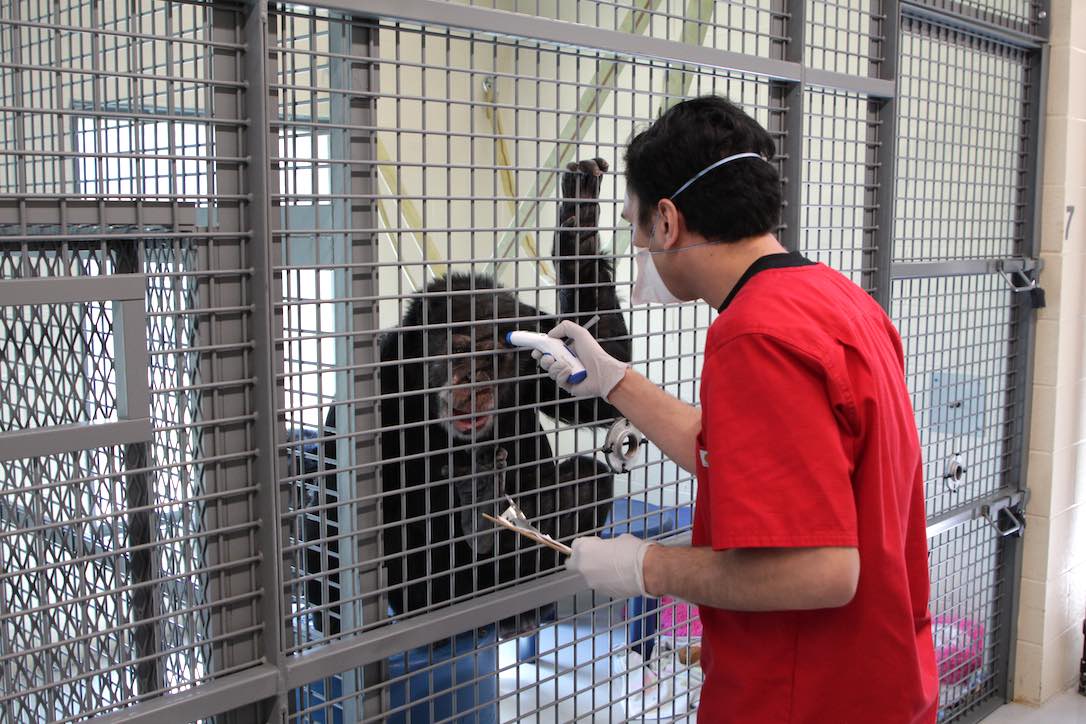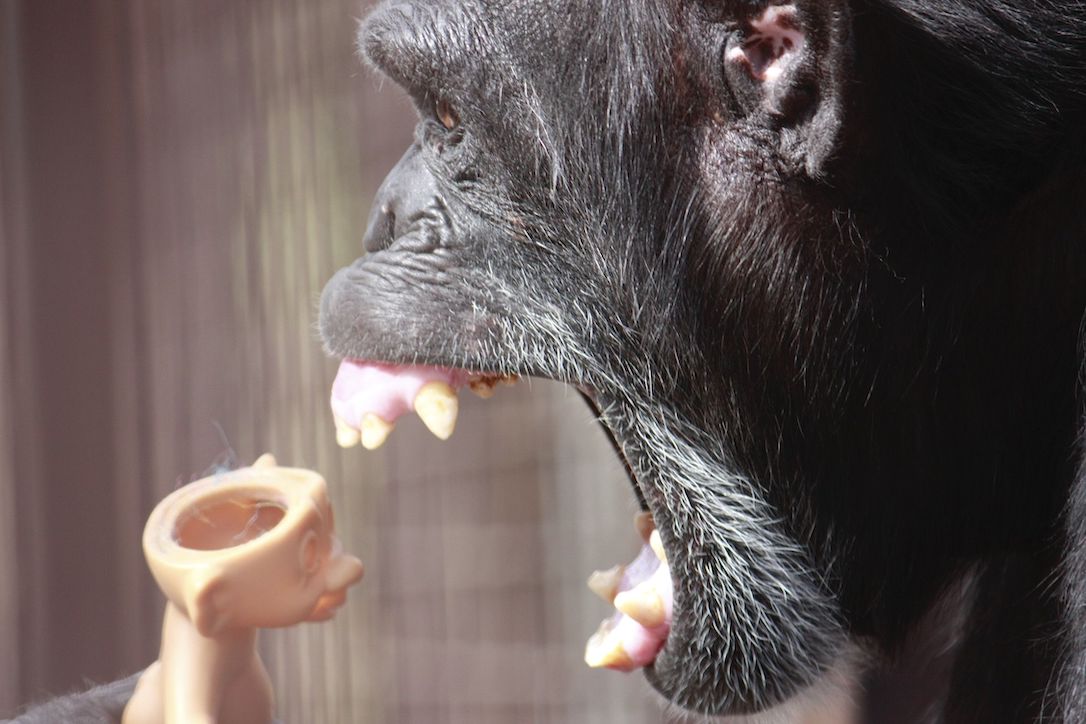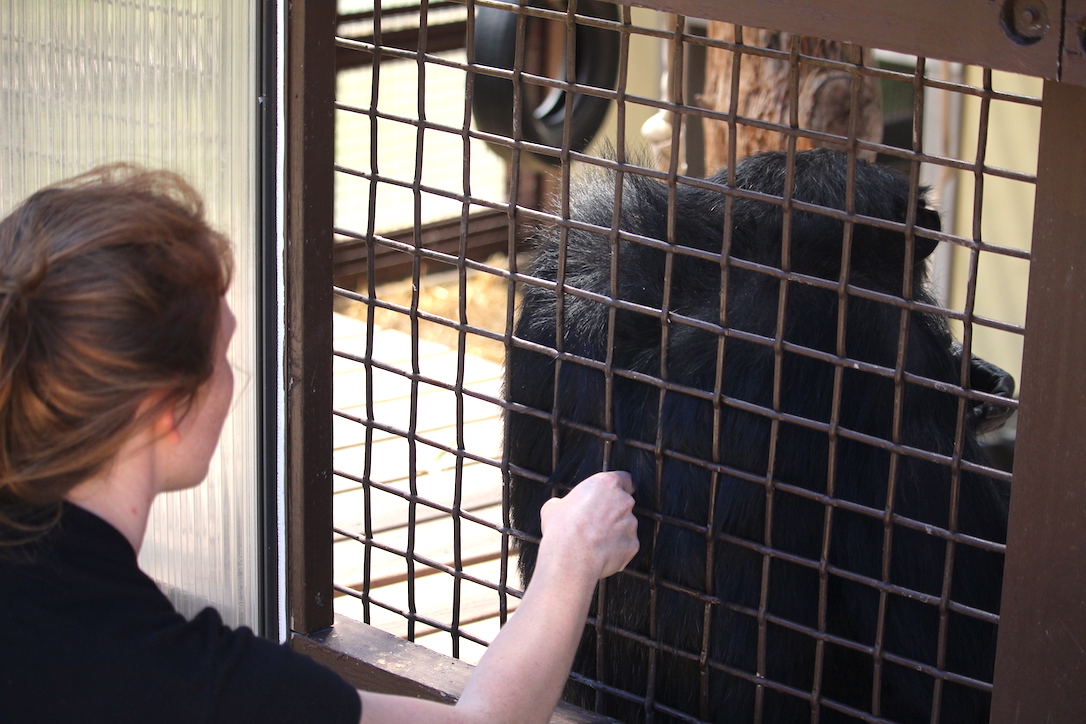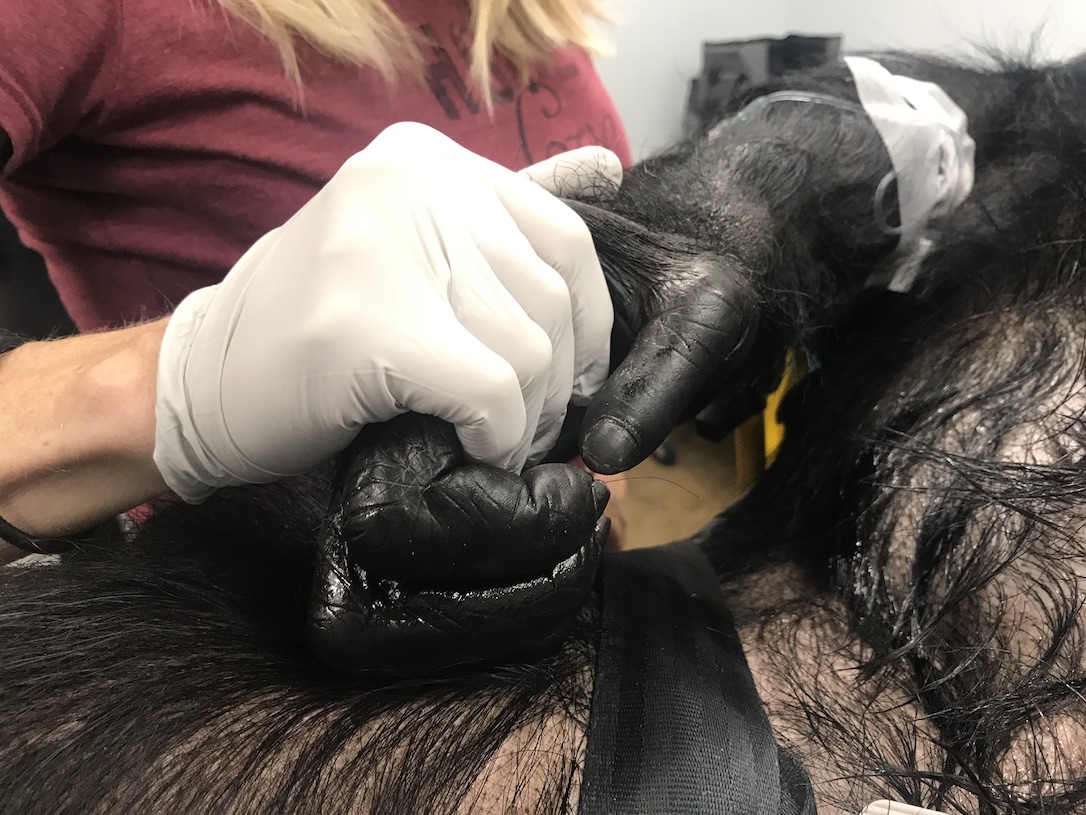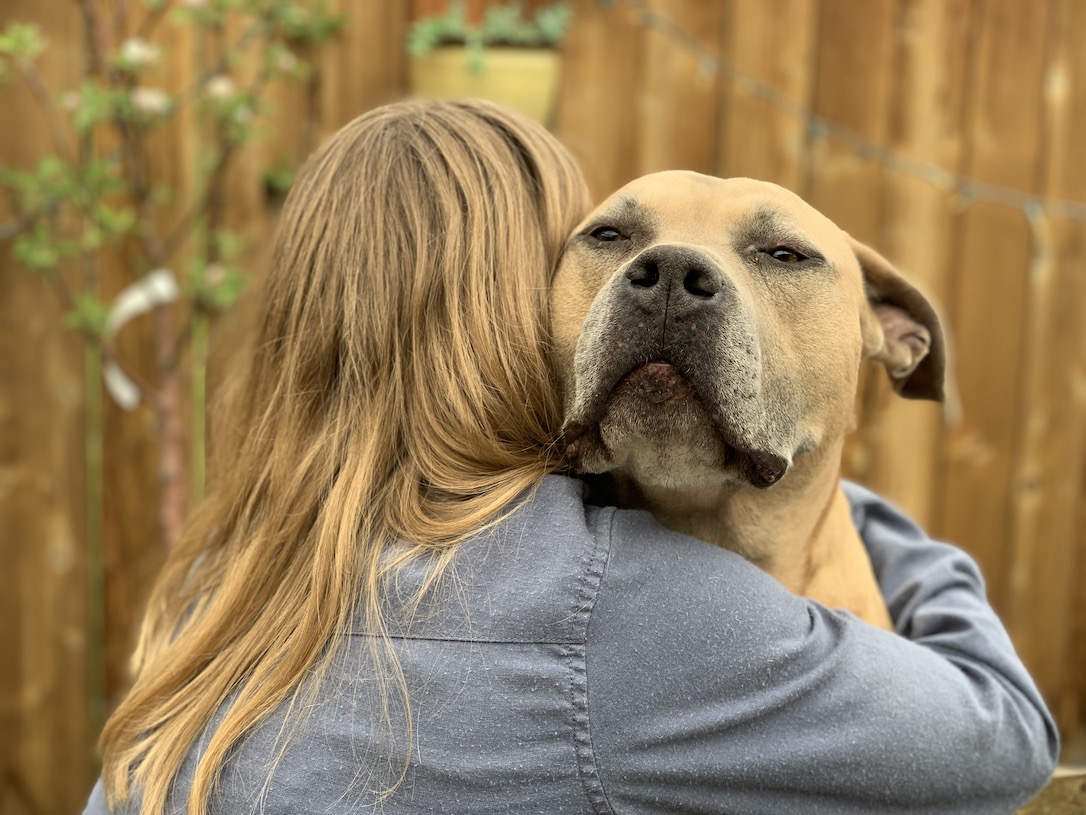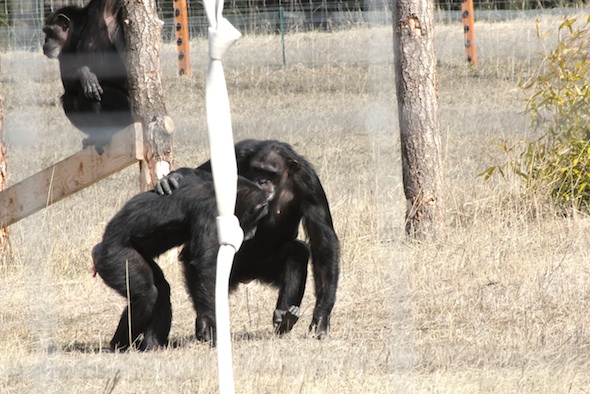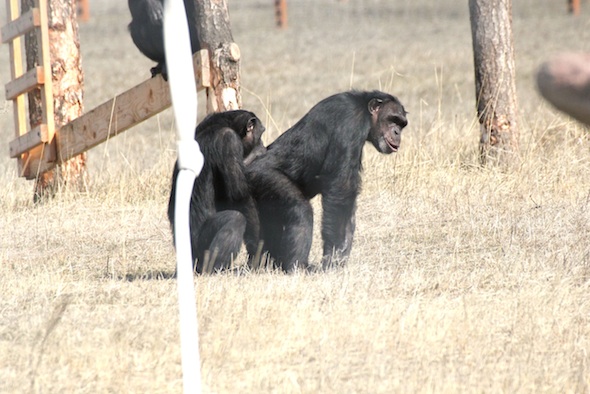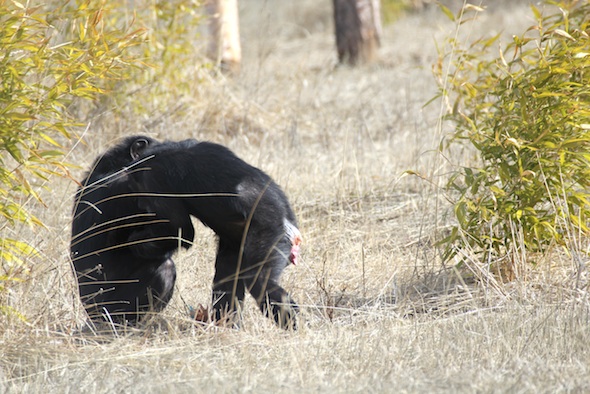Every time I meet a new person and explain my job to them, it is inevitable that they ask about how much contact I have with the chimps. Lots of questions come up, such as, “Do you hug them?”, “Do you hold them?”, or “So you just sit and hang out with them?”. If you are new to our blog and our sanctuary’s mission, the quick answer to all previous questions are NO. At all times, caging separates the chimps and the humans (unless they are under anesthesia). This is for everyone’s protection. Chimpanzees, on average, are 3-8x stronger than humans. Unintentionally (or intentionally), a chimpanzee could easily hurt us.
Any physical contact we have with the chimps is done in a safe manner based on strict protocols.
One example, is grooming. We often let the chimps groom us as it is a natural behavior for them to strengthen relationships and remove debris or parasites from one another. To groom with them safely, we will allow them to groom the back of our closed hand, with the chimp’s fingers fully extended, or use a tool from a safe distance.
Grace and Rayne demonstrating this perfectly:
Jamie grooming Grace with a tool:
We often also let the chimps groom our shoes. We have a few chimps (like Terry, Jamie, and Lucky) who absolutely love footwear. To let them groom our shoes safely, we will present our shoes to them from a safe distance (where they can only touch, not grab or pin). We do not put our feet up against the caging, but only close enough where they can touch the boots with their fingers extended.
Terry grooming boots:
Another way we may physically interact with the chimps is through play.
Burrito’s favorite game is to poke the back of our hands, as fast as he can. I’m sure you have seen many videos of this over the years. Again, to do this in a safe way, we ensure our fingers are tucked and Burrito’s finger is fully extended. We also make sure to not push our hand against the caging but only where he can reach us from a safe distance.
J.B. and Burrito:
Chad and Burrito:
Playing tug of war allows us to hold onto the end of a blanket or scarf from a safe distance, while still being fully engaged with a play session with a chimp. We make sure to not wrap the material around us in any way, to avoid unexpectedly being pulled close to the caging. We also ensure we are fully balanced on our feet before beginning to play. If the chimp pulls hard on the blanket to win the game of tug of war, we immediately let go so we don’t get too close to the caging.
Dr. Erin and Burrito playing tug of war
Food
We hand-serve all of the meals to the chimps. This is the best way to ensure each chimp is getting their own food portions. To serve the food in a safe way, we use two fingers to grab the item at the furthest point, and then push through the caging where the chimp’s hand awaits. That is quite hard to explain. Here are some pictures that show this process!
Grace serving Cy:
Anthony serving Foxie a smoothie (with his hand at the bottom of cup only):
Positive Reinforcement Training (PRT)
Positive reinforcement training is a wonderful tool to allow the chimps to participate in their own medical care. While doing PRT, we can do everything at a safe distance and we never put our fingers inside the caging.
Chad taking Mave’s temperature:
J.B. asking for Burrito’s foot during PRT:
So while we limit our direct physical contact with the chimps, it is for both parties safety, to respect their space, and to let them be chimps! If you do see content online or in-person where the humans are directly next to a chimpanzee without caging, you should be questioning the type of facility the chimp is in. It is not an accredited zoo or sanctuary if you are seeing this type of content.
A gentle reminder, primates are not pets.
